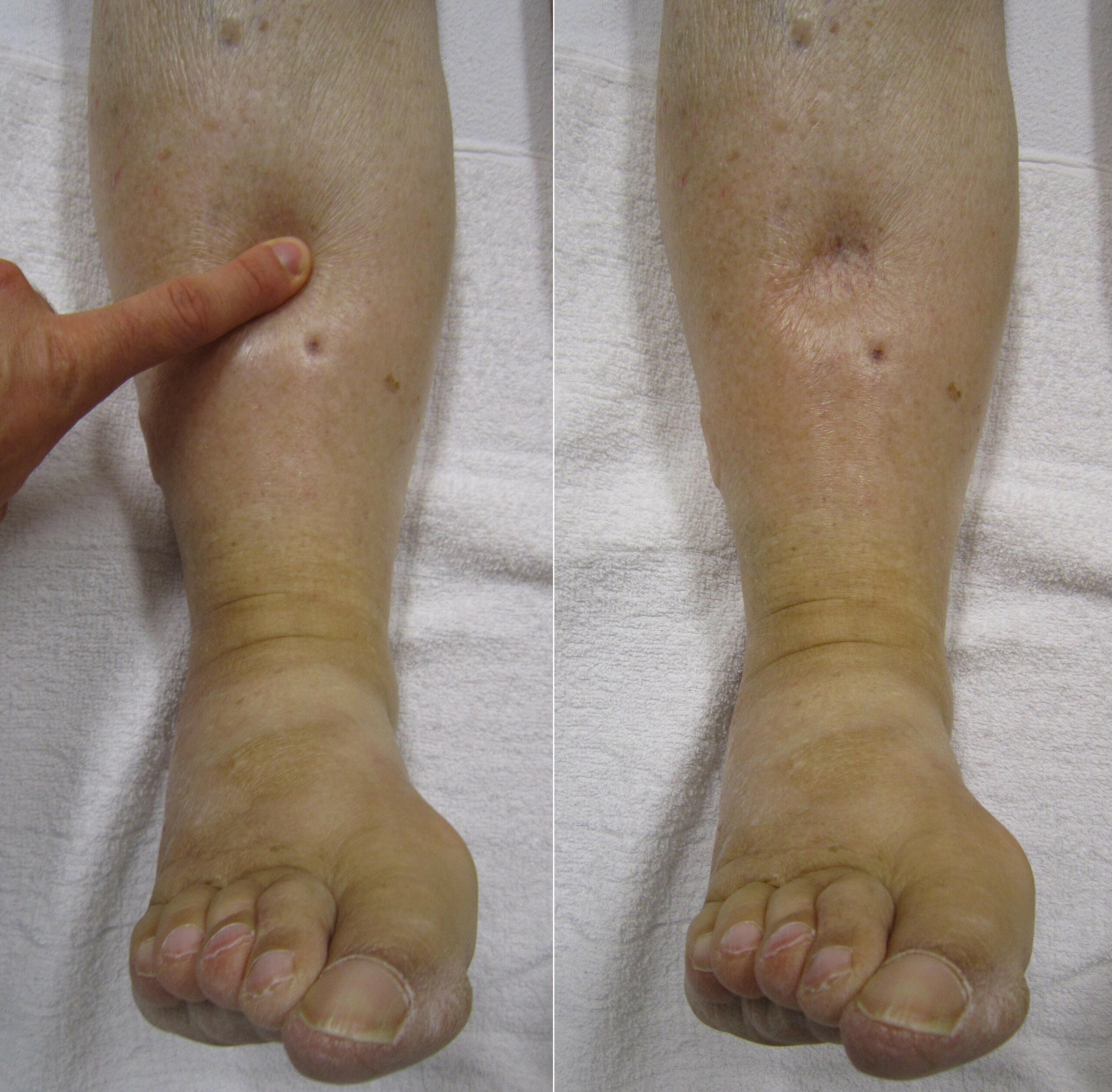Cyclic Edema: Symptoms, Causes, Treatment
What are the symptoms of cyclic edema?
Cyclic edema, also known as cyclic edema syndrome or idiopathic cyclic edema, is a condition characterized by the accumulation of fluid in the tissues, usually in the legs, feet, and ankles. The symptoms of cyclic edema can vary but may include:
- Swelling: Swelling in the legs, feet, ankles, or hands is the most common symptom of cyclic edema. The swelling may be mild to moderate and may worsen throughout the day.
- Pitting edema: Pressing on the swollen area with a finger may leave a temporary indentation or “pit” in the skin.
- Weight gain: Due to fluid retention, individuals with cyclic edema may experience temporary weight gain.
- Tightness or heaviness: Some people may experience a sensation of tightness or heaviness in the affected limbs.
- Skin changes: The skin over the swollen area may appear shiny or stretched, and in severe cases, it may become discolored or develop sores.
- Reduced flexibility: Severe swelling can limit the range of motion in the affected joints.
- Discomfort or pain: Swelling and fluid retention can cause discomfort or mild pain, especially when walking or standing for long periods.
- Symptoms that worsen with activity: Symptoms of cyclic edema typically worsen throughout the day, especially after prolonged periods of standing or sitting.
It’s important to note that cyclic edema is a chronic condition, and symptoms tend to recur periodically. The exact cause of cyclic edema is not well understood, but it is thought to be related to changes in fluid balance and circulation. If you experience symptoms of cyclic edema, it’s important to see a healthcare provider for an evaluation and appropriate management.
What are the causes of cyclic edema?
The exact cause of cyclic edema, also known as cyclic edema syndrome or idiopathic cyclic edema, is not well understood. However, several factors may contribute to the development of this condition, including:
- Fluid imbalance: Cyclic edema may be caused by an imbalance in the body’s fluid regulation system, leading to the accumulation of fluid in the tissues.
- Hormonal changes: Fluctuations in hormone levels, such as those that occur during the menstrual cycle, pregnancy, or menopause, may play a role in the development of cyclic edema. Some women may experience worsening symptoms of cyclic edema during certain phases of their menstrual cycle.
- Vascular abnormalities: Changes in the blood vessels or lymphatic system may contribute to the development of cyclic edema, leading to poor fluid drainage from the tissues.
- Genetic predisposition: There may be a genetic component to cyclic edema, as the condition can run in families.
- Dietary factors: High-salt diets or certain food sensitivities may contribute to fluid retention and worsen symptoms of cyclic edema in some individuals.
- Medications: Some medications, such as hormones, corticosteroids, or blood pressure medications, may contribute to fluid retention and worsen symptoms of cyclic edema.
- Other medical conditions: Certain medical conditions, such as heart failure, kidney disease, or liver disease, may contribute to fluid retention and edema.
It’s important to note that cyclic edema is a chronic condition, and the underlying cause may not always be identified. Treatment for cyclic edema typically focuses on managing symptoms and may include lifestyle modifications, such as reducing salt intake, elevating the legs, wearing compression garments, and taking diuretic medications to help reduce fluid retention. If you experience symptoms of cyclic edema, it’s important to see a healthcare provider for an evaluation and appropriate management.
What is the treatment for cyclic edema?
The treatment for cyclic edema, also known as cyclic edema syndrome or idiopathic cyclic edema, aims to reduce fluid retention and manage symptoms. Treatment options may include:
- Lifestyle modifications: Making changes to your lifestyle can help manage symptoms of cyclic edema. This may include reducing salt intake, elevating the legs when sitting or lying down, avoiding prolonged periods of standing or sitting, and engaging in regular physical activity to improve circulation.
- Compression garments: Wearing compression stockings or sleeves can help improve circulation and reduce swelling in the legs and feet.
- Diuretic medications: In some cases, healthcare providers may prescribe diuretic medications to help reduce fluid retention. These medications help the body get rid of excess fluid through increased urination.
- Dietary changes: Following a balanced diet rich in fruits, vegetables, whole grains, and lean proteins can help maintain a healthy weight and reduce fluid retention.
- Avoiding triggers: Identifying and avoiding triggers that worsen symptoms, such as certain foods or medications, can help manage cyclic edema.
- Elevating the legs: Keeping the legs elevated when sitting or lying down can help reduce swelling and improve circulation.
- Massage therapy: Massage therapy may help improve circulation and reduce fluid retention in some individuals with cyclic edema.
- Monitoring for complications: Regular monitoring by a healthcare provider is important to check for any complications of cyclic edema, such as skin changes or infections.
It’s important to work closely with a healthcare provider to develop a treatment plan that is tailored to your individual needs. If you experience symptoms of cyclic edema, it’s important to see a healthcare provider for an evaluation and appropriate management.




